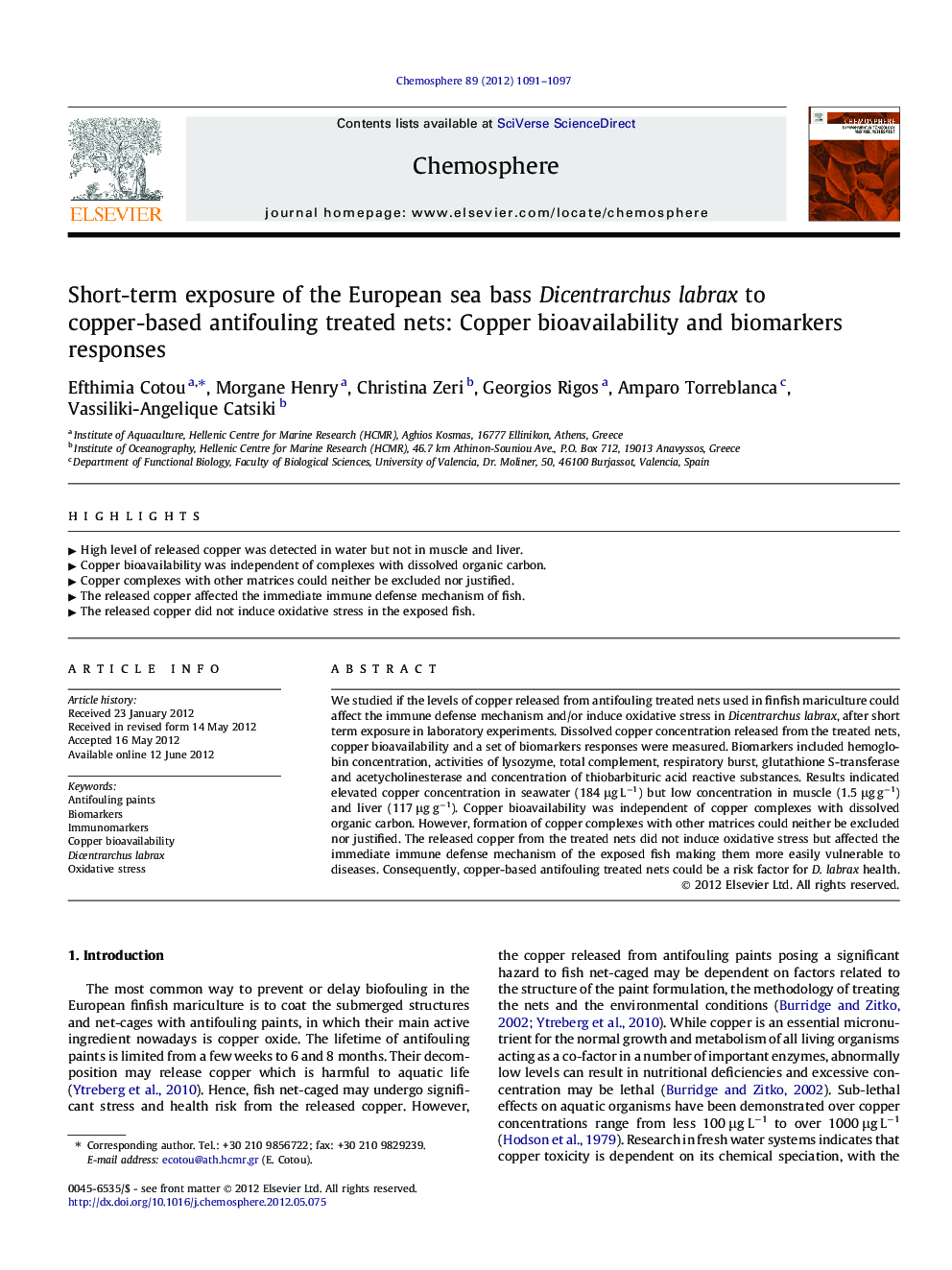| Article ID | Journal | Published Year | Pages | File Type |
|---|---|---|---|---|
| 4409821 | Chemosphere | 2012 | 7 Pages |
We studied if the levels of copper released from antifouling treated nets used in finfish mariculture could affect the immune defense mechanism and/or induce oxidative stress in Dicentrarchus labrax, after short term exposure in laboratory experiments. Dissolved copper concentration released from the treated nets, copper bioavailability and a set of biomarkers responses were measured. Biomarkers included hemoglobin concentration, activities of lysozyme, total complement, respiratory burst, glutathione S-transferase and acetycholinesterase and concentration of thiobarbituric acid reactive substances. Results indicated elevated copper concentration in seawater (184 μg L−1) but low concentration in muscle (1.5 μg g−1) and liver (117 μg g−1). Copper bioavailability was independent of copper complexes with dissolved organic carbon. However, formation of copper complexes with other matrices could neither be excluded nor justified. The released copper from the treated nets did not induce oxidative stress but affected the immediate immune defense mechanism of the exposed fish making them more easily vulnerable to diseases. Consequently, copper-based antifouling treated nets could be a risk factor for D. labrax health.
► High level of released copper was detected in water but not in muscle and liver. ► Copper bioavailability was independent of complexes with dissolved organic carbon. ► Copper complexes with other matrices could neither be excluded nor justified. ► The released copper affected the immediate immune defense mechanism of fish. ► The released copper did not induce oxidative stress in the exposed fish.
